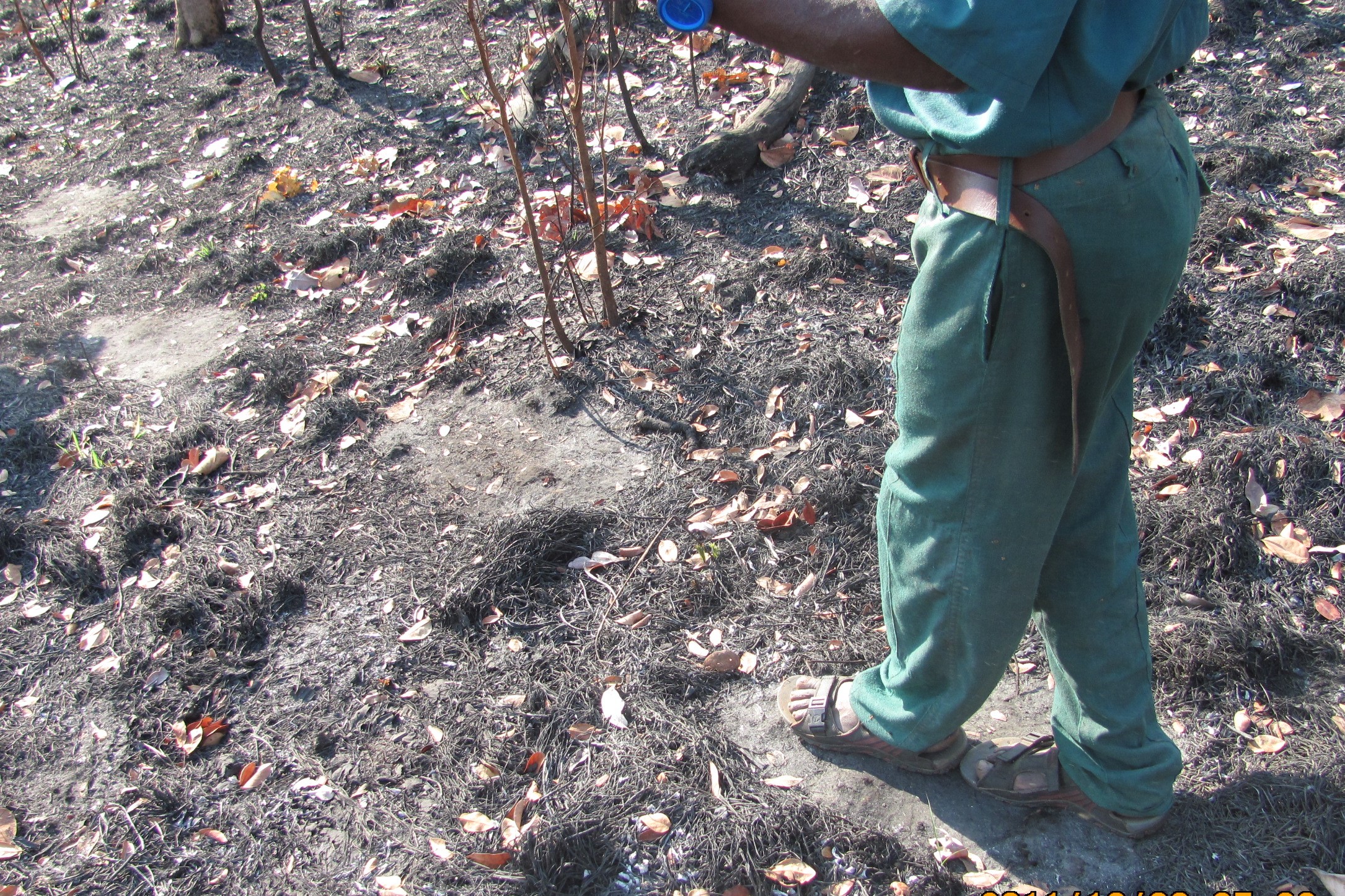A stone’s throw out of our lair of last night, and we came across this posting on African Bush fb. It was fresh, made in the early dark hours by a lone bull elephant. As you can see from the spoor, he was heading west (from left to right on the pic) and quite briskly.
He might not have picked up our scent under the smoke from our fire, which we had kept going through the night, but he would certainly have seen the fire’s flickering glow and, being downwind and close, the great ears may even have detected the feint mutter of the flames, or perhaps a snore, or fiddling from the one on watch. But his tracks went straight by, without even slowing down. The great grey ghost had glided past on those padded feet without so much as a crack or even a muted scrape to alert the person on watch. He simply didn’t deign it worthwhile to investigate us.
All of that is food for much speculation, but nothing unusual in the bush. What intrigued us was the size of his tracks. His hind foot imprint overlapped quite a bit over the front foot (which is why I remarked that he was walking at a fair pace) but we could still see the front imprint’s full outline. Nelson’s right heel is at the front edge and his left toe at the rear edge of the bull’s front imprint – a full two number eights long!
Now that got us speculating. What size could a bull with feet this size be? What did he look like? Was he perhaps an unknown great tusker, or a known one from Tanzania that had wondered south across the Ruvuma into the northern hinterlands of Mozambique?
We were not heading anywhere in particular in any hurry, so we decided to follow him for a bit to see if we might catch up with him – hopefully catch a glimpse of him…
We tracked him through the rise of the morning, but around midday we hadn’t yet caught up with him. He had kept a steady pace and an elephant walking just moderately fast is a lot quicker than a striding man.
Tracking slows one down a lot too. Over the soft miombo veldt we were able to keep up a shuffling run on the tracks. But then the terrain changed a bit and the soil became harder and gravelly with sparse grass cover and with the sun directly overhead and the temperature probably touching forty centigrade, tracking became slow, hard work.
Now a good tracker need not have the spoor in view all the time. In fact, the real masters work more on their intuition of what the animal might be thinking and doing; they use the spoor more to confirm they were right. So, they need to really know the bush and the animals. They have to get inside the animal’s mind. My experience is that such refined skills are only found in older men that had spent their lives in the bush and had had the privilege of a master teacher. Ironically the best ones are usually also notorious poachers.
But be that as it may, arguments like “He had been moving in the cool of night and we have to work in the heat. We are unlikely to catch up with him before it gets dark” and, “This is a dry part. We don’t know if we will find water further on,” and, “Even if we carry on, we are going to have to rest up a bit. The angle of the sun is very bad for tracking now anyway. That means he would be gaining even more on us,” and, “He may not even have really spectacular tusks. Many of the largest-bodied bull elephants we have known did not have large tusks, or did not have tusks at all,” and, “Is it really worth working so hard and maybe not seeing him at all, or maybe just catching a brief glimpse?” began to move forward in our heat-hammered minds.
In the end I think it was the African sun that had the strongest argument. Besides, there was something to say for not observing him and keeping alive the delicious speculation about a giant tusker wandering the trackless far northern wilderness…

Unfair. Been waiting/reading, hoping to get a glimpse of Big Foot! Exciting, nevertheless!